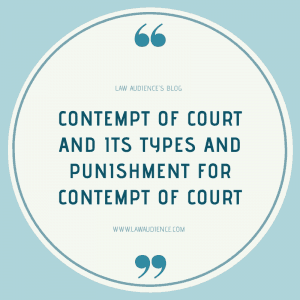RELATIONSHIP OF BANKER AND CUSTOMER[1]
INTRODUCTION
A banker is a person who takes the banking as a profession, according to the Section-5(c) of the banking. Banking means taking deposits from the customers, for the lending purpose which is repayable on demand or can be a withdrawal by draft, order, and cheque. A banker is a person who on the behalf of bank receives the money and collects cheques and drafts. However, a customer is a person who opens an account in the bank and which the banker accepts with proper information. One can take the money from the bank but the relationship is not based upon the frequency of transactions. One must have been accustomed to having the introduction with the banker.
RELATIONSHIP BETWEEN BANKER AND CUSTOMER
The relationship between the two is according to the condition of the customer’s account is of debtors and creditors i.e.whether the balance in the account is debit or credit. However, there are some more restrictions which make the relationship different from normal debtors and creditors. A banker provides a number of services to the customer and also acts as a trustee to his customer if the customer hands over the banker with trust work. So, in such a scenario, the banker acts as a debtor and trustee at the same time but in relation to the particular business. The designation of a banker as a trustee depends upon the situation of each case. If he does in the general course of business without any particular direction from the customer, he acts as a debtor or creditor. In the case where money or bills deposited in the bank for the desired purpose, the banker’s position will be determined by finding out whether the specific amount was credited or debited from the customer’s account or not. On the other hand, if the customer asks his bank to buy certain securities out of his deposit with the bank, but the bank fails, then the bank will remain as a debtor of his customer regarding the amount which was not withdrawn from the account of the customer.
TYPES OF RELATIONSHIP
- General Relationship
- Special Relationship
General relationship comprises of primary and secondary relationship. In a primary relationship, includes the debtor and creditor relationship & the creditor and debtor relationship.
DEBTOR AND CREDITOR RELATIONSHIP
In this case, the banker accepts money as the deposit from the customer. So, the banker becomes the debtor and the customer becomes the creditor. The only responsibility is to return the amount deposited with the particular interest on demand. The banker can deal with the amount the way he wishes to. In this case, the banker is the noble debtor and banker should pay the deposit money on the demand of the customer. The amount should be paid at the particular place and the demand should be made on working days in the business hours. However, the customer is not the secured creditor and the balance at the bank is not repayable.
CREDITOR AND DEBTOR RELATIONSHIP
In this, the banker acts as a creditor and the customer is the debtor. In the case of the deposit account, the debtor and creditor relationship holds a better position. However, in the matter of loan, cash credit, and overdraft, the banker becomes the creditor and the customer holds the position of the debtor.
In the secondary relationship comes the following
- Banker as a trustee.
- Banker as an agent.
- Banker as a bailee.
- Banker as a lessor.
A banker plays the role of an agent to his customer and performs the different duties for the convenience of the customer. For example, he purchases and sells securities on the behalf of his customer, collects cheques and makes the payment of various dues, e.g. insurance premium etc. These days the bank plays an important role and renders a large number of agency services of different nature.
In a special relationship comes the obligation and rights of a banker. As a banker, particular obligations are to be fulfilled towards the customer. Following are the obligations:
- An obligation to honour the cheque of the customer.
- An obligation to receive the cheques and other documents for collection.
- An obligation to maintain the confidentiality of the customer’s account.
- An obligation to give prior notice before closing the customer’s account.
- An obligation to honour the cheques of the customer across the counter.
RIGHTS OF BANKER
- Right not to produce books of account.
- Right to appropriate payment.
- Right to set off.
- Right to lien.
- Right to charge interest, commission, incidental charges and commitment charges.
According to the provisions of the Banker books Evidence Act 1891, the banker is not allowed to produce the original copies of an account as a proof in a case where the banker is not the party. He only has the right to produce an attested copy of the particular part of the account which can be considered as evidence before the court. The right to set off is the method of merging two or more accounts of the customer. It is the duty of the banker to recollect the goods as securities entrusted to him by the customer in respect of the general account balance due from the customer. The banker as a creditor has the right to charge interest on the advance given to the customer. In the right to charge commission, a banker renders particular services to the customer that cannot be given free and this is why the banker has the right to charge certain charges which are known as the commission. Incidental charges are the charges given on the inoperative current accounts of the customer.
CONCLUSION
Hence, a banker is a person who on the behalf of the bank, honors cheques drawn upon him by people from and for whom he receives the amount on their account. No one can be a banker who does not take the deposit and current accounts, issues and pay cheques and collect cheques on the behalf of his customer. However, a customer is a person who holds the deposit or current account in the bank. The relationship between a banker and the customer can be either of a debtor and creditor or of a creditor and the debtor.
[1] Authored By: Ms. Natasha Jain, LL.B, Student at New Law College, Bharati Vidyapeeth Deemed University & Research Writer at Law Audience: Edited By: Priya Kushwah, B.A.LL.B, Student at National University of Study and Research in Law, Ranchi & Assistant Editor at Law Audience.



